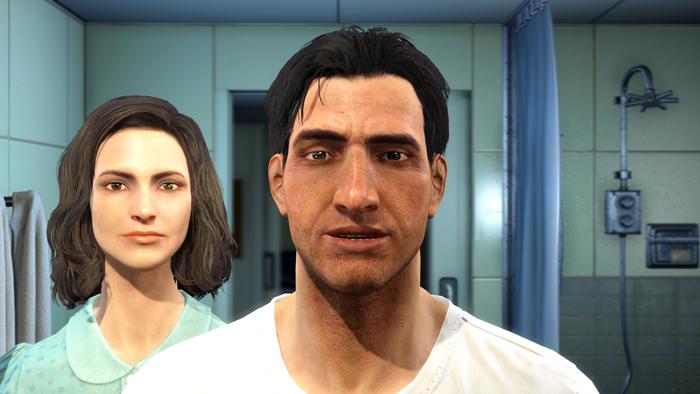Image Quality and System requirements
Visual Image Quality
Fallout 4 looks quite OK. A nice atmosphere, things like diffused, misty lighting in the woods. The fact that there even are woods, and plants, and colour, rather than just the same blasted, monotone grimescape we’re so used to getting from the series’ various retro steampunk kinda scenes. Texture quality however leaves a lot to be desired on.
That must mean a new-gen rendering engine, right? Ehm no. Fallout 4 is running on ‘a next-generation version of Bethesda’s Creation Engine’, basically a modded iteration of the same engine that powered games like Skyrim four years ago. The same engine Bethesda used for Fallout 3, and Oblivion before it, yet upgraded.
Bethesda has retained close relations with Nvidia ever since the graphics company aided in the development of the water effects in The Elder Scrolls III: Morrowind, which released in 2002. Volumetric light, which Bethesda describes as “spilling across the scene,” is heavily reliant on the GPU’s hardware tessellation. This is an Nvidia Gameworks title.
System requirements
Minimum
- Windows 7/8/10 (64-bit OS required)
- Intel Core i5-2300 2.8 GHz/AMD Phenom II X4 945 3.0 GHz or equivalent
- 8 GB RAM
- 30 GB free HDD space
- NVIDIA GTX 550 Ti 2GB/AMD Radeon HD 7870 2GB or equivalent
Recommended
- Windows 7/8/10 (64-bit OS required)
- Intel Core i7 4790 3.6 GHz/AMD FX-9590 4.7 GHz or equivalent
- 8 GB RAM
- 30 GB free HDD space
- NVIDIA GTX 780 3GB/AMD Radeon R9 290X 4GB or equivalent
- Tiled Deferred Lighting
- Temporal Anti-Aliasing
- Screen Space Reflections
- Bokeh Depth of Field
- Screen Space Ambient Occlusion
- Height Fog
- Motion Blur
- Filmic Tonemapping
- Custom Skin and Hair Shading
- Dynamic Dismemberment using Hardware Tessellation
- Volumetric Lighting
- Gamma Correct Physically Based Shading


